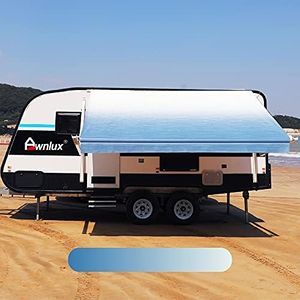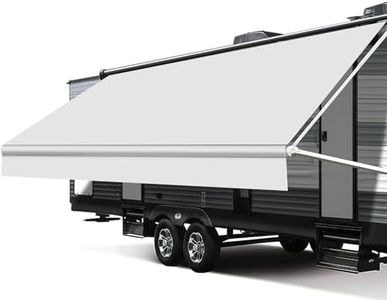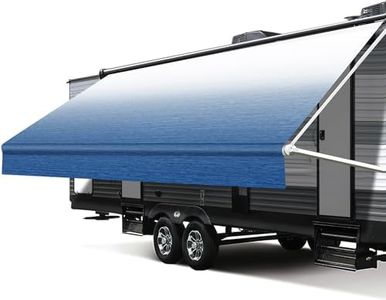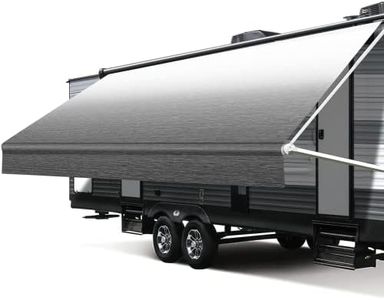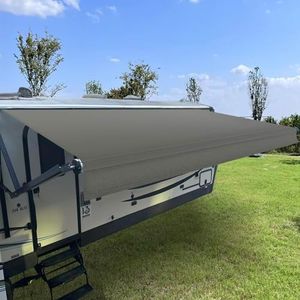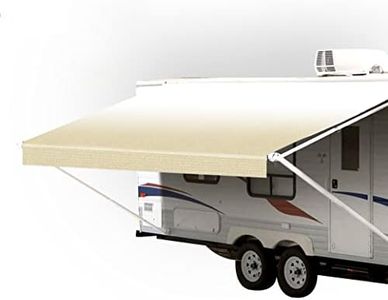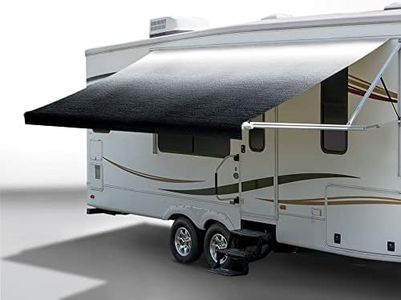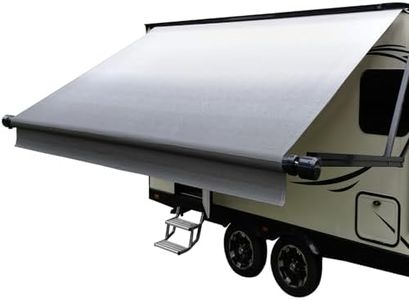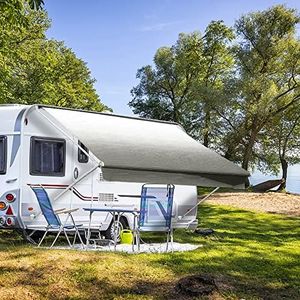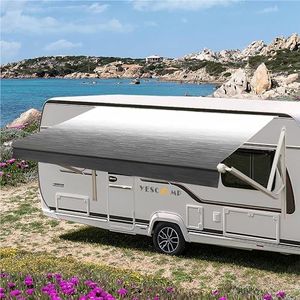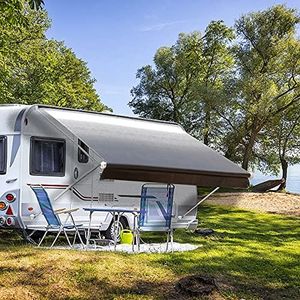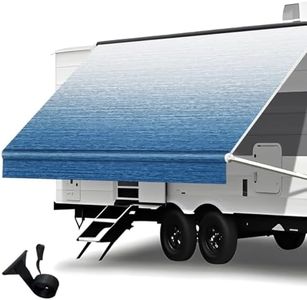We Use CookiesWe use cookies to enhance the security, performance,
functionality and for analytical and promotional activities. By continuing to browse this site you
are agreeing to our privacy policy
10 Best Rv Awning Fabric
From leading brands and best sellers available on the web.Buying Guide for the Best Rv Awning Fabric
Choosing RV awning fabric is all about matching your travel habits, climate exposure, and long-term expectations with a fabric that gives you the right combination of durability, style, and ease of maintenance. The fabric you pick will shield you from sun and rain, so it’s important to understand what really matters when comparing your options. Before you buy, think about how often you use your RV, whether you camp in sunny or rainy areas, and how much effort you want to spend on cleaning and care.MaterialThe material is the main type of fabric used in your RV awning, with the most common being vinyl and acrylic. This spec is crucial because it determines both the durability and weather resistance of your awning. Vinyl is waterproof, making it great for rain protection, and tends to be heavier and easy to clean, but it can get warm and sometimes sticky in hot climates. Acrylic is breathable, which makes it a good option if you spend time in hot areas as it stays cooler, but it isn’t completely waterproof—it's more water-resistant and dries quickly. For frequent travelers in varied weather, acrylic can be a good pick, while those parking in rainy regions may prefer vinyl.
UV ResistanceUV resistance reflects how well the fabric can withstand damage from the sun’s rays. This is important because sun can break down fabric over time, fading colors and weakening fibers. Fabrics are rated on their ability to resist UV wear, and this is typically higher with better-quality materials or special coatings. If most of your RVing is in bright, sunny areas, select a fabric with high UV resistance to help it last longer and keep its color.
Waterproofing and Water ResistanceWaterproofing indicates whether your awning will keep out all water, or just most of it. Vinyl is usually fully waterproof, while acrylic is more water-resistant (it sheds most water but can let some through in heavy rain). This spec is key for those who camp in rainy areas; pick fully waterproof if you need reliable rain protection, but if you usually camp in mild, dry climates, good water resistance may be enough.
Fabric Thickness (Weight)Fabric thickness, usually given in ounces per square yard or grams per square meter, affects durability and how well your awning stands up to wind and wear. Thicker/heavier fabrics generally last longer and resist tearing, but might be harder to handle and take longer to dry. Lighter fabrics are easier to install and store, but may not last as long in harsh weather. If you’re a seasonal or occasional camper, a lighter fabric may be suitable, but frequent and long-term RVers should look at thicker options.
Maintenance and CleaningThis describes how easy it is to keep your awning fabric clean and looking good. Some fabrics need only occasional rinsing, while others can require special cleaners or treatments to prevent mold or mildew. Vinyl is more likely to attract dirt and can be prone to mildew if not dried out, so may need more care. Acrylic resists dirt and mildew better but still needs routine cleaning. If you want minimal maintenance, look for fabrics designed as 'easy-care' or mildew-resistant, especially if you camp in humid spots.
Color and PatternColor and pattern aren’t just about style—they also play a practical role. Darker colors may absorb heat and fade more quickly under the sun, while lighter colors stay cooler and hide dust but might show stains more easily. Select a color and pattern that fits both your taste and your camping environment; for example, lighter colors are great for hot sunny regions, whereas patterned or darker fabrics might better conceal dirt if you're often on dusty roads.
